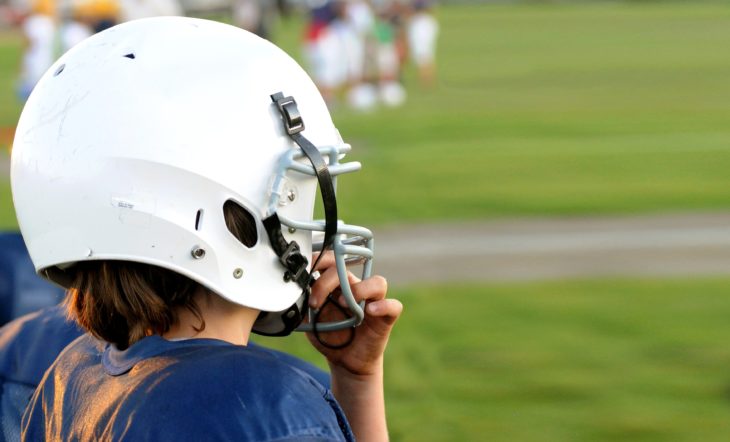As we approach the upcoming football season, it is important to protect our children from injury. In a collegiate football study, 28 percent of players suffered some type of injury that year. Foot and ankle injuries are frequent, and even knee and hip injuries can be a result of the shoe/grass interaction. Injury prevention is essential in protecting players, and selecting the best shoe is no easy task. These facts can help when selecting a shoe.
SIZE 12 MIGHT NOT BE A SIZE 12
In shoe stores, the choices can be overwhelming. The shoe designs are all different and the models change every year. Our selections usually are narrowed by our size availability.
However, our shoe size might not be what we think. Over 50 percent of the population has different sized feet. Each foot should be measured when selecting a shoe, and some people may need to purchase different sized shoes to match large discrepancies. Excess room or overcrowding in a shoe can predispose the foot to injury.
Remember, not all sizes are accurate. One survey looking at more than 45 commercially available 2016 size 12 football cleated shoes found that the inner shoe length might be closer to a size 11/13. Also, the shoe’s inner width can vary up to half an inch.
FLEXIBLE IS NOT ALWAYS BETTER
Historically, the design of the shoe plate has focused on flexibility to match the position demands. However, a lighter and more flexible shoe is not always better for the athlete. With increased flexibility comes increased stress across the midfoot and forefoot.
One study found that 45 percent of professional football players suffer a “turf toe injury” or hyperdorsiflexion injury to the first metatarsophalangeal joint at some point in their career. A stiffer and more supportive shoe does have its benefits. Studies have shown that an increase in stiffness of the shoe can result in performance improvement. However, more research is needed to determine optimal shoe stiffness and how this relates to athlete performance.
SLIPPING ISN’T ALWAYS A BAD THING
The shoe/ground interaction has implications when it comes to injury. When a cleat touches the ground during a cut, three things can happen: the cleat slides, the cleat tears the surface, or the cleat holds with minimal movement. While athletes would like to avoid falling, a cleat that grips the grass applies a greater force that can lead to injury.
Regardless of which shoes you buy, it is important to keep these facts in mind. Football is played at a higher intensity at earlier ages, and protecting the foot and ankle is essential in keeping players safe.
Dr. Mullens, a fellowship-trained orthopedic foot and ankle surgeon, joined Bienville Orthopedic Specialists in August 2018. A native of Kansas, Dr. Mullens is a well-trained graduate of the University of Alabama School of Medicine in Birmingham. He completed his orthopedic surgery residency at the University of South Alabama in Mobile and a foot and ankle residency at The Steadman Clinic in Vail, Colo. Outside of medicine, Dr. Mullens enjoys skiing, golfing, traveling and spending time with his family at the beach.


